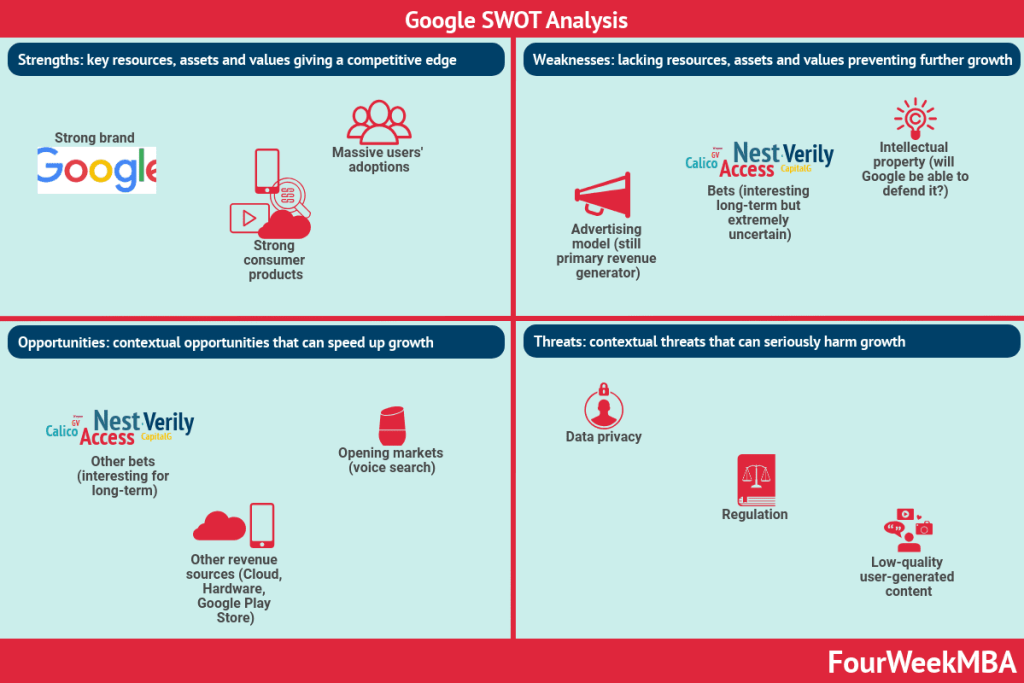Founded in 1903 by Henry Ford and is the fifth-largest family-owned company in the world. Ford is a globally recognized brand in the automotive industry for a couple of reasons. First, Henry Ford is well-known as the inventor of the production line and thus the modern automobile industry. Today, Ford has also maintained relevance as the seventh-largest car manufacturer worldwide, selling a range of passenger cars, trucks, and vans.
Let’s have a look at a SWOT analysis for Ford to give a general view of its position in the automotive market.
Strengths
- Dominant market position – Ford’s biggest market is the United States, where it enjoys a 14.8% market share for cars and light trucks. It is second only to General Motors.
- Proven expertise in light commercial vehicles – this leaves Ford in a good position to take advantage of the increasing demand for delivery vehicles as a result of the surge in eCommerce.
- Consumer popularity – Ford enjoys a consistent and long-lasting relationship with its customers. For example, the Ford F-Series pickup truck has been the highest selling truck in the USA for a record 41 years straight. Furthermore, the F-series outsold its closest rival by over 200,000 units in 2017.
- Research and development – Ford continues to invest heavily in research and development. Powertrain technology, eco-friendly fuel, and improved safety are the focuses of the company. Ford also owns many patents – with over 100 patents alone filed on their pickup trucks.
Weaknesses
- Dependence on US markets – Ford has a high dependence on sales derived from the US market. It has little to no exposure in emerging car markets such as China and India, where experts predict the majority of future car sales will originate. Ford has also struggled to make an impact in Europe after initial success there.
- Product recalls – approximately 830,000 Ford and Lincoln vehicles were recalled in 2016 because of faulty side door latches, hurting Ford’s brand image. Further recalls occurred in 2019 when over 1.2 million SUVs were found to have suspension problems.
- High-cost model – Ford’s relatively high priced vehicles are reflected in its generous employee wage packages. However, this puts it at a competitive disadvantage to its competitors – particularly Asian brands such as Toyota, Mazda, and Hyundai.
Opportunities
- Emerging economies – if Ford can manufacture vehicles for Chinese and Indian consumers while still maintaining profits, then this represents an excellent opportunity for company growth.
- Green vehicles – as consumers become more concerned with environmentally friendly transport, Ford is well placed with their research and development background to develop cars to fill this market.
- Ride-sharing – because of Ford’s reputation for producing fuel-efficient engines, it is also well placed to take advantage of the demand for ride-sharing services such as Uber and Lyft.
Threats
- New competitors – the growing presence of foreign car companies in the USA is cause for concern. Volkswagen and Toyota, in particular, are challenging Ford’s long-held status as the maker of the most popular pickup truck. Mercedes and Nissan are also offering vans that compete with similar Ford offerings.
- Changes in consumer preferences – like all automotive manufacturers, Ford faces an uncertain future. The shift toward alternative fuels is a matter of when not if. There is also an increasing trend away from privately owned cars toward public transport.
- Changes in legislation – several European countries have taken steps to restrict carbon emissions, particularly in the wake of the Volkswagen emissions scandal. Other countries where Ford does business are also setting stricter standards, such as Australia, Japan, Taiwan, and South Korea.
SWOT Analysis Case Studies


















Read Next: SWOT Analysis, Personal SWOT Analysis.
Other case studies:
- Amazon SWOT Analysis Example
- Apple SWOT Analysis Example
- Facebook SWOT Analysis Example
- Google SWOT Analysis Example
- Netflix SWOT Analysis Example
- Starbucks SWOT Analysis Example
- Tesla SWOT Analysis Example
Other resources:









